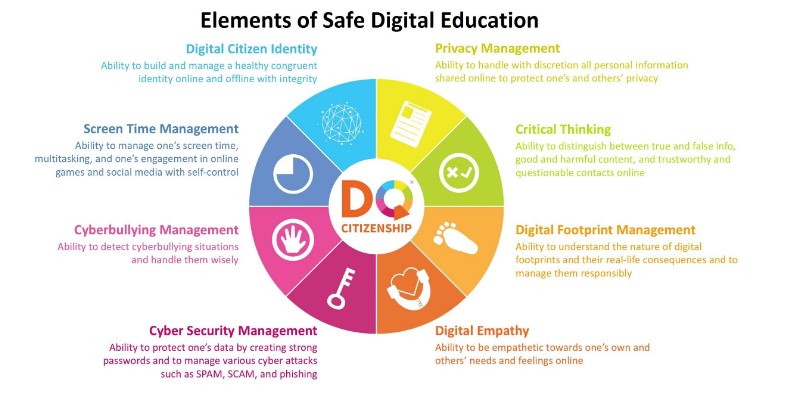ONLINE EDUCATION IN INDIA
2020 OCT 26
Mains >
Social justice > Education > Education

WHY IN NEWS:
- There is an increased thrust on online education in recent times, mainly due to the impact COVID-19 pandemic.
CHALLENGES OF ONLINE EDUCATION IN INDIA:
- Technological Constraints:
- Lack of e-resources:
- Students, who do not have access to e-resources (computers, laptops, internet connectivity), will not be able to attend classes from home.
- Internet access:
- India still not achieved universal internet penetration
- Three-fourths of students in India did not have access to the internet at home, according to a 2017-18 all-India NSO survey
- Moreover there is absence of adequate speed of the internet
- Lack of comprehensive policy on online education:
- India lack a proper policy on medium of online education, digital infrastructure etc.
- Gaps in teachers education:
- Teachers are ill-equipped with required skills and infrastructure, as teacher education in India does not give importance to online education
- Widens inequality:
- Students in richer households have better access to internet and computers >> hence they are the only beneficiaries of online education programmes
- 55% of students among the top 20% of households by monthly per capita expenditure (MPCE) knew how to use a computer and internet while these proportions were only 9% and 10% among the bottom 20%.
- Pedagogical issues leading to bad quality education:
- Online education has certain barriers in ensuring smooth teacher-student interaction >> hence result in poor quality of education
- Lack of Practical Learning:
- Most of the subjects like beauty culture, fashion design and tailoring, office management, travel and tourism, web design etc need practical learning so it is difficult to teach them from a distance.
- Gap in digital literacy:
- As many as 76% of students in India in the 5-35 age group did not know how to use a computer.
- No opportunity to learn social skills:
- Traditional classroom organisations like schools and colleges, as social space (whereby a student not just learns the academic knowledge but many social skills also), are indispensable.
- All subjects can’t be taught online:
- Certain subjects required direct interaction between teacher and student – which may not be possible in online education ex; Music, painting etc.
- Lack of standardised content for regional languages:
- Children studying regional languages are at a disadvantage as there is not much standardised content available yet online for them.
GOVERNMENT INITIATIVES:
- Schemes:
- National Mission on Education through ICT (NMEICT):
- To leverage the potential of ICT to make the best quality content accessible to all learners in the country free of cost.
- E- learning platforms:
- SWAYAM:
- The Study Webs of Active Learning for Young Aspiring Minds' (SWAYAM) is an integrated platform for offering online courses, covering school (9th to 12th) to Postgraduate Level
- SWAYAM Prabha:
- It is an initiative to provide 32 High Quality Educational Channels through DTH (Direct to Home) across the length and breadth of the country on a 24X7 basis.
- Diksha:
- Provides teacher training courses, teaching resources such as lesson plans and assessments for teachers, to find out their strengths and areas of improvement
- E-pathasala:
- It is a joint initiative of MHRD and NCERT, which has been developed for showcasing and disseminating all educational e-resources including textbooks, audio, video, periodicals, and a variety of other print and non-print materials for students, teachers, parents, researchers and educators.
- Policy initiatives:
- National Education Policy (NEP) 2020:
- It provides for alternative modes of quality education should be developed when in-person education is not possible
- It also proposes several interventions to ensure inclusive digital education
- Pragyata:
- It is a set of digital education guidelines
- Institutions:
- The National Education Technology Forum (NETF)
- NIOS (National Institute of Open Schooling)
- Budget proposal:
- Budget 2020-21 proposed to start degree level full-fledged online education programme.
- This shall be offered only by institutions who are ranked within top 100 in the National Institutional Ranking framework
- NROER (National Repository of Open Educational Resources):
- To bring together all digital and digitisable resources across all stages of school education and teacher education.
- Virtual labs and spoken learning programmes.
- National Digital Library of India (NDL):
- It is a project to develop a framework of virtual repository of learning resources with a single-window search facility
- Free and Open Source Software for Education (FOSSEE):
- It is a project promoting the use of open source software in educational institutions
- E-Yantra:
- It is a project for enabling effective education across engineering colleges in India on embedded systems and robotics
BEST PRACTICES:
- Local:
- Social Media Interface for Learning Engagement (SMILE) in Rajasthan.
- Unnayan Initiatives in Bihar.
- Kerala’s own educational TV channel (KITE VICTERS).
- International:
- E-learning in South Korea has been recognized as a best practice by UNESCO.
- The achievements of Korean e-Learning and ICT in education policy are recognized as a result of a solid legal framework, systematic implementation mechanism, secured budget and support, timely capacity building, successful cooperation between public and private sectors, and an eff ective monitoring and evaluation system.
WAY FORWARD:
- Training teachers:
- Training teachers on how to become high-quality online content creators.
- Creating digital repository:
- Creating a digital repository of coursework, learning games and simulations through virtual reality
- Use of other medium where digital infrastructure is lacking:
- Use of other channels such as television, radio, mass media in multiple languages to ensure reach of digital content where digital infrastructure is lacking
- Creating virtual labs:
- Creating virtual labs on existing e-learning platforms to provide students with hands-on experiment-based learning

PRACTICE QUESTION:
Q. “Transition from teacher-class based teaching to digital-education will need multi-pronged efforts over time”. Comment

